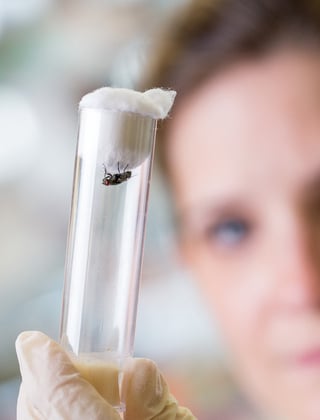Foot and Mouth Disease (FMD) facts and resources

FMD represents the greatest disease threat to Australia’s livestock industries and export markets. It has the potential for rapid and extensive spread. An outbreak would stop the export of all cloven-hoofed animals and their products, at least in the short term.
FMD represents the greatest disease threat to Australia’s livestock industries and export markets. It has the potential for rapid and extensive spread. An outbreak would stop the export of all cloven-hoofed animals and their products, at least in the short term. It was recently estimated by the Australian Department of Agriculture that an outbreak of FMD would cost Australia $80 billion over 10 years.
CONSEQUENCE
Wool has the advantage over other commodities of being non-perishable and therefore able to be stockpiled. Notwithstanding this advantage, the wool industry’s strong export orientation places it at significant risk should Australia face an outbreak of FMD. Importing countries would immediately place a ban on imports of Australian wool and this ban would remain in place until each country’s authorities were satisfied that the wool posed no threat to their national biosecurity. See the emergency animal disease RD&E strategy for the Australian wool industry: Protecting the Australian Wool Pipeline: Post-Farmgate Emergency Animal Disease Preparedness RD&E Strategy 2019/20 – 2021/22 (PDF, 902Kb)
COHESION
AWI stands ready to support those representing the wool industry in their role as decision makers and spokespeople, in line with existing plans such as those under the Emergency Animal Disease Response Agreement (EADRA) and WoolProducers Australia (WPA).
WPA is the wool industry signatory to the EADRA and has prescribed rights and responsibilities under that agreement.
See the EADRA on the Animal Health Australia website.
COLLABORATION
AWI is a partner in the wool industry’s Post-Farmgate Emergency Animal Disease Preparedness RD&E Strategy.
The goal of this strategy is to further improve the level of Emergence Animal Disease (EAD) preparedness of the Australian wool industry by putting in place innovations that will, in the case of an EAD incursion:
- maximise the time- and cost-effectiveness of the Government/industry response
- minimise reputational damage to the Australian wool industry
- minimise disruption to flows of Australian wool to the world’s markets; and/or
- achieve the most rapid possible return to normal business for woolgrowers, customers and other participants in the wool industry pipeline.
FUNCTION OF AWI – AS THE RESEARCH, DEVELOPMENT AND MARKETING BODY
Reserves
AWI holds significant reserves for the purpose of assisting with an EAD response.
Research
See the Beyond the Bale article Post farm biosecurity: Australia on the front foot (December 2019, PDF, 689Kb)
- AWI funding led to the development of a prototype ‘bale sprayer’. A prototype device has been shown to allow the rapid disinfection of bales in stores. Fast construction of devices is possible from existing plans should the need arise.
- AWI funded research into temperature within wool bales in relation to the external temperature. This is significant as we know how long wool needs to be exposed to various temperatures to deactivate the FMD virus.
- Ensuring all plans, processes, procedures and other documentation that come into play during an EAD contain the most up-to-date information with the publication of a specific Wool Enterprise Manual as part of the AUSVETPLAN EAD response framework, which is managed by Animal Health Australia. The Wool Enterprise Manual contains all of the information needed to understand, for example, how wool flows through the supply chain, how it can be traced, the various participants in the chain and their roles in a response. See the AUSVETPLAN Operational guidance on the decontamination of wool and wool facilities (PDF, 2.2Mb)
What AWI provides post-farm
- Any EAD requires the wool industry to have welltrained, well-prepared people. The post-farmgate part of the wool value chain collaborates closely with WoolProducers Australia, which would have official industry responsibilities during an EAD outbreak.
- Broker and agent online EAD training: Register for the eLearning platform by clicking the link in the top blue box on the Animal Health Australia website.
- AWI and WIA have developed an online Biosecurity Risk Assessment Tool to assist post-farm wool handling facilities to identify the biosecurity strengths and weaknesses within their business.
- A guide to completing the EAD preparedness plan template for wool handling facilities (PDF, 491Kb)
OTHER RESOURCES
AWI resources:
- FMD international outbreaks a warning for Australia
Beyond the Bale article, June 2022 - Andrew Henderson chair of SAFEMEAT discusses in detail how the industry is protected, what you can do to help, and what happens if the disease is found in Australia
The Yarn podcast, episode 221, 8 July 2022 - Post-farm biosecurity: Australia on the front foot
Beyond the Bale article, December 2019 - Post-farm biosecurity vital
Beyond the Bale article, June 2018 - How your PIC can help you in a crisis
Beyond the Bale article, September 2017 - Aussies undertake foot and mouth disease training in Nepal
Beyond the Bale article, March 2017 - Being prepared for trade impacts of exotic diseases
Beyond the Bale article, March 2017
Industry and government resources:
- Farm Biosecurity website including the latest information on FMD
- Animal Health Australia website including the latest information on FMD
- FMD/LSD: Four ways to protect your livestock and livelihood on the Meat & Livestock Australia website
- Contact your local government veterinary authority for information in your state:
- NSW: Emergency and biosecurity - Local Land Services website
- Victoria: Foot and mouth disease - Agriculture Victoria website
- South Australia: Foot and mouth disease – PIRSA website
- Queensland: Foot-and-mouth disease information for livestock owners - Business Queensland website
- WA: Foot-and-mouth disease: prevention and preparedness -DPIRD website
- Tasmania: Reporting an Emergency Animal Disease - Department of Natural Resources and Environment Tasmania website
















